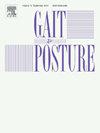反重力跑步机训练在临床康复中的应用:系统回顾和荟萃分析
IF 2.4
3区 医学
Q3 NEUROSCIENCES
引用次数: 0
摘要
目的对反重力跑步机在临床康复中的应用和效果进行系统综述和荟萃分析。数据来源PubMed、Embase和Scopus三个数据库从成立到2024年5月1日进行了检索。评估反重力跑步机训练在临床康复中的效果的临床试验符合纳入条件。方法由两名独立审稿人进行研究选择、数据提取和质量评估。采用物理治疗证据数据库量表和美国国立卫生研究院研究质量评估工具评估方法学质量。进行荟萃分析以确定反重力跑步机训练对健康相关结果的影响。结果共纳入24项研究,包括15项随机对照试验和9项单队列临床试验,共纳入682例患者。对于神经肌肉疾病,反重力跑步机训练显著改善了平衡(SMD: 1.78, 95 % CI: 0.93-2.64, p <; 0.001)和步态速度(SMD: 0.90, 95 % CI: 0.10-1.70, p = 0.03)。步态耐力无显著差异(SMD: 0.41, 95 % CI: - 0.02-0.83, p = 0.06)。肌肉骨骼疾病,反重力跑步机训练导致显著提高步态表现(SMD: 2.99, 95 % CI: 1.66 - -4.33, p = 0.006)和下肢功能(SMD: 1.55, 95 % CI: 0.58 - -2.52, p = 0.002),并降低疼痛(SMD:−1.59,95 % CI: 2.39−−0.79,p & lt; 0.001)。在纳入的研究中,没有报告任何与反重力跑步机训练有关的事件。结论反重力跑步机在增强神经肌肉和肌肉骨骼疾病患者的临床康复方面具有良好的效果。作为一种新兴的康复技术,反重力跑步机可以改善不同患者群体的功能和支持康复。本文章由计算机程序翻译,如有差异,请以英文原文为准。
The application of antigravity treadmill training to clinical rehabilitation: A systematic review and meta-analysis
Objective
This systematic review and meta-analysis aims to identify, critically appraise, and summarize research regarding the application and effects of antigravity treadmills in clinical rehabilitation.
Data sources
Three databases, PubMed, Embase, and Scopus were searched from inception to May 1, 2024. Clinical trials assessing the effects of the antigravity treadmill training in clinical rehabilitation were eligible for inclusion.
Methods
Two independent reviewers conducted study selection, data extraction, and quality assessment. Methodological quality was assessed using the Physiotherapy Evidence Database scale and the National Institutes of Health Study Quality Assessment Tool. Meta-analyses were performed to determine the effects of the antigravity treadmill training on health-related outcomes.
Results
A total of 24 studies were included, comprising 15 randomized controlled trials and nine single-cohort clinical trials, with a combined sample of 682 patients. For neuromuscular conditions, antigravity treadmill training produced significant improvements in balance (SMD: 1.78, 95 % CI: 0.93–2.64, p < 0.001) and gait speed (SMD: 0.90, 95 % CI: 0.10–1.70, p = 0.03). No significant difference was found in gait endurance (SMD: 0.41, 95 % CI: −0.02–0.83, p = 0.06). For musculoskeletal conditions, antigravity treadmill training resulted in significantly improved gait performance (SMD: 2.99, 95 % CI: 1.66–4.33, p = 0.006) and lower extremity function (SMD: 1.55, 95 % CI: 0.58–2.52, p = 0.002), and reduced pain (SMD: −1.59, 95 % CI: −2.39 to −0.79, p < 0.001). Among the included studies, none reported any events related to antigravity treadmill training.
Conclusion
This review highlights the promising effects of the antigravity treadmill in augmenting clinical rehabilitation among patients with neuromuscular and musculoskeletal conditions. As an emerging rehabilitation technology, antigravity treadmill may improve function and support recovery in diverse patient populations.
求助全文
通过发布文献求助,成功后即可免费获取论文全文。
去求助
来源期刊

Gait & posture
医学-神经科学
CiteScore
4.70
自引率
12.50%
发文量
616
审稿时长
6 months
期刊介绍:
Gait & Posture is a vehicle for the publication of up-to-date basic and clinical research on all aspects of locomotion and balance.
The topics covered include: Techniques for the measurement of gait and posture, and the standardization of results presentation; Studies of normal and pathological gait; Treatment of gait and postural abnormalities; Biomechanical and theoretical approaches to gait and posture; Mathematical models of joint and muscle mechanics; Neurological and musculoskeletal function in gait and posture; The evolution of upright posture and bipedal locomotion; Adaptations of carrying loads, walking on uneven surfaces, climbing stairs etc; spinal biomechanics only if they are directly related to gait and/or posture and are of general interest to our readers; The effect of aging and development on gait and posture; Psychological and cultural aspects of gait; Patient education.
 求助内容:
求助内容: 应助结果提醒方式:
应助结果提醒方式:


